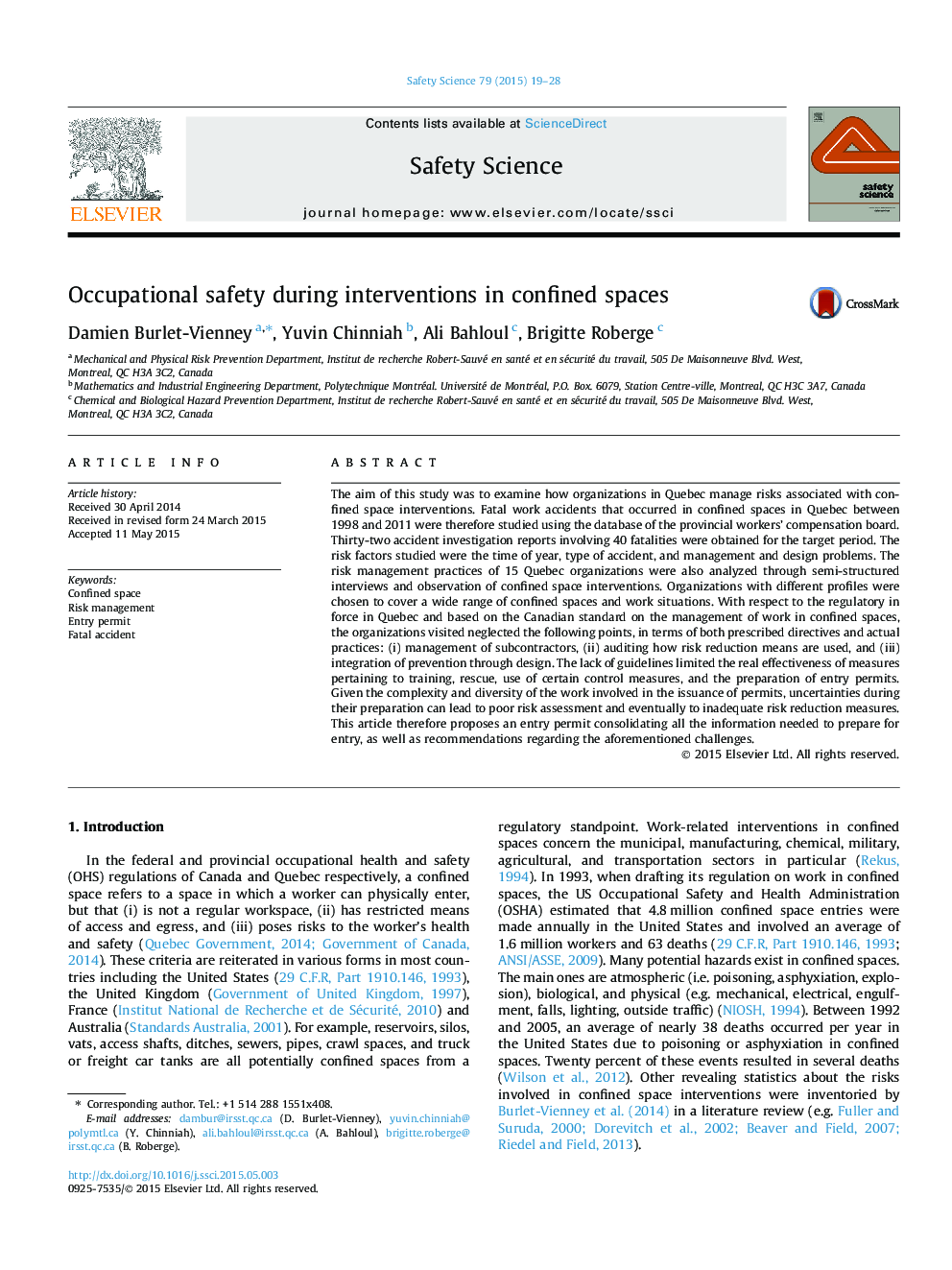| Article ID | Journal | Published Year | Pages | File Type |
|---|---|---|---|---|
| 6975652 | Safety Science | 2015 | 10 Pages |
Abstract
The aim of this study was to examine how organizations in Quebec manage risks associated with confined space interventions. Fatal work accidents that occurred in confined spaces in Quebec between 1998 and 2011 were therefore studied using the database of the provincial workers' compensation board. Thirty-two accident investigation reports involving 40 fatalities were obtained for the target period. The risk factors studied were the time of year, type of accident, and management and design problems. The risk management practices of 15 Quebec organizations were also analyzed through semi-structured interviews and observation of confined space interventions. Organizations with different profiles were chosen to cover a wide range of confined spaces and work situations. With respect to the regulatory in force in Quebec and based on the Canadian standard on the management of work in confined spaces, the organizations visited neglected the following points, in terms of both prescribed directives and actual practices: (i) management of subcontractors, (ii) auditing how risk reduction means are used, and (iii) integration of prevention through design. The lack of guidelines limited the real effectiveness of measures pertaining to training, rescue, use of certain control measures, and the preparation of entry permits. Given the complexity and diversity of the work involved in the issuance of permits, uncertainties during their preparation can lead to poor risk assessment and eventually to inadequate risk reduction measures. This article therefore proposes an entry permit consolidating all the information needed to prepare for entry, as well as recommendations regarding the aforementioned challenges.
Related Topics
Physical Sciences and Engineering
Chemical Engineering
Chemical Health and Safety
Authors
Damien Burlet-Vienney, Yuvin Chinniah, Ali Bahloul, Brigitte Roberge,
